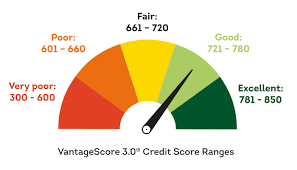How a Travel Credit Card Can Be Your Ticket to Big Savings
How a Travel Credit Card Can Unlock Substantial Savings for You Whether you’re a business executive hopping onto a red-eye to seal a deal or an impassioned explorer crisscrossing the globe in search of new experiences, your travel can become significantly more rewarding – and less financially taxing – with the right travel credit card. It’s less about the card itself and more about the financial jiu-jitsu possible when used judiciously. Travel credit cards promise a constellation of benefits, ranging from miles that could whisk you away to exotic locales, to perks like airport lounge access that offer a slice of serenity amidst the bustling chaos of travel. This guide is your map to navigating the labyrinth of options and leveraging a travel credit card as a potent tool for jet-setting savings. Understanding Travel Credit Cards Travel credit cards are an exceptional subcategory of credits cards, earning their keep by focusing on rewarding the very act that they’re named for – travel. They can be differentiated from conventional ones chiefly by their tailored perks. These cards might boast a handsome treasure trove of sign-up bonuses, earn steep rewards rate on travel-related spending, and often tether travel insurance to their offers like a kite to a child’s hand. The real gem, though, lies in the accumulation of points with each swipe and the new and improved version of ‘loyalty miles,’ now part of a point system that can be redeemed with a litany of airlines, hotels, and rental car companies. Not All Reward Programs Are Created Equal It’s essential to differentiate the quality of rewards programs. For example, some may offer a flat rate of points per dollar spent, while others operate on a tiered system. Some may have categories that could earn more points, such as dining out or booking flights directly with airlines or through their portals, which usually yield higher rewards. Percriptions for Poignant Perks Inclusions like free checked bags, travel credits, and TSA pre-check or Global Entry fee reimbursement, can significantly reduce your travel costs and add a layer of comfort and convenience to your journeys. The Financial Benefits of Using a Travel Credit Card Once considered through the strict lens of financial pragmatism, travel credit cards emanate a compelling logic. They allow travelers to convert everyday purchases into opportunities for travel savings. Each accrued point translates not into whimsical trinkets but tangible savings on an already-budgeted expense – travel. Maximizing Your Points for Optimal Benefits The strategy here is twofold. Firstly, conscientious individuals should endeavor to use their cards for all possible transactions to ensure a steady influx of points. Secondly, the judicious application of the bonanza of incentives, be it cashback, discounted travel, or complimentary upgrades, amplifies the savings manifold. A Safety Net of Sorts Travel can be unpredictable; missed flights, lost luggage, and medical emergencies are never planned for. This is where the security a travel credit card can provide comes into play. Many travel cards offer built-in trip cancellation insurance, baggage delay coverage, and even rental car collision coverage. Choosing the Right Travel Credit Card Selecting a travel credit card is not merely about picking one from the display; it’s a strategic choice informed by a sophisticated understanding of your personal financial habits and travel needs. The market is inundated with a smorgasbord of options, each with its constellation of attributes. The Sign-Up Moment: Bonuses That Set the Tone Many travel credit cards come with lavish sign-up bonuses. The ensuing rewards on your initial spending can often equate to a significant financial windfall, so choosing a card with an attractive bonus is a pivotal first step. It’s All in the Details: Reading the Fine Print Annual fees and interest rates must be factored into your deliberations. Contrast the allure of rewards with the economic reality of these costs to determine the net financial benefit. The Universal Law of Acceptance The utility of your travel credit card is contingent upon its universality. Confirm its global acceptance before you’re left in an overseas bind, forced to rely on a card that will treat each international transaction as an anomaly, charging a fee that siphons off the accrued advantages. Real-World Examples of Savings Personal finance is, well, personal. Here, anecdotes and case studies offer a real-world calibration to abstract advice. Take, for instance, the tale of a frequent traveler who shifted his expenditure patterns to revolve around his travel credit card, ensuring a steady influx of points that allowed him to book business class tickets at a fraction of their usual cost. Pointing the Way to Savings: Personal Finance Tips Experts recommend an encapsulated approach to travel savings, including auditing your monthly expenses to find categories where you can earn the most points, setting alerts for expiring points, and even considering sharing points with a close friend or family member to maximize redemption value. Conclusion For the discerning traveler, a travel credit card is more than just an addition to the wallet – it’s a financial instrument unparalleled in its potential for cost savings and reward accumulation. This piece advocates for an empowered and educated approach to leveraging the benefits of a travel credit card, from choosing the right one for your needs to employing it with precision to extract the maximum value. The potential for savings is an enticing prospect, one that dovetails into the fundamental premise of travel — to explore, unshackle from the mundane, and discover new perspectives. By strategically aligning your credit card with these ambitions, the ticket to a world of savings is just a swipe away. In an era where travel is not just a luxury but a testimony to life’s vitality, a travel credit card could be the asset that transforms the scope of one’s adventures and, quite possibly, the depth of one’s pockets. For more personalized advice or assistance in selecting the perfect travel credit card that aligns with your travel ambitions, speak to our financial experts or visit your local branch. Tune in to the possibility









